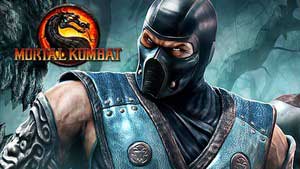Combat system Mortal Kombat Guide
Last update: 11 May 2016
Fatality
A Fatality is performed on a defeated, wagging opponent, after the hailing "Finish Him!" A sequence of keys responsible for given fatality should be performed in the correct order and distance from your opponent. A sequence of keys needed for the first fatality is known from the beginning. To unlock other fatalities you have to perform proper actions or use at least once a new, so far unknown fatality. There are three kinds of finishing moves in Mortal Kombat, which can be divided into 5 categories:
Basic Fatality is available for each character. A combination of moves needed to perform it is given and you don't have to unlock it.
Secret Fatality is available for each character. You perform it same as a Basic Fatality but a sequence of keys is not given to you.
Klassic Fatality is available only for Scorpion, Sub-Zero and Reptile. In order to perform it you have to win a fight having one of these three as your character, wearing a classic costume.
Stage Fatality is available for each character. Its animation and a distance from your opponent are closely related to the arena where the fight takes place. Usually it is performed near to an opponent. Arenas where you can perform Stage Fatality are: Chamber of the Flame, Hell, Subway, The Dead Pool, The Living Forest, The Pit, The Street.
Babality is available for each character and its animation depends on an opponent. In order to perform it during the fight you can't block opponent's attack. Babality is performed away from the opponent - it is best to perform it on the jumping distance and two more steps back, but usually jumping distance is enough.
Hit regions and blocking
There are three different hit regions in Mortal Kombat, significant for a combat system. An animation of some moves may indicate a completely different region that it looks, but more important is how they are classified.
Low attacks - briefly called Low in this guide. They hit lower parts of the opponent's body and are blocked while crouching.
High attacks - briefly called High in this guide. They hit upper parts of the opponent's body and are blocked in any position. Some attacks on High won't hit a crouching character.
Mid attacks - briefly called Mid in this guide. They hit between low and high attacks. They are blocked while standing.
There are two types of attacks, which do not affect hit regions, because block has no affect on them. These are throws and blows which can't be blocked.
Basic moves common to all characters
Sweep - it is a blow on Low, performed by simultaneously pressing Circle and Back. It inflicts average damage and knocks opponent to the ground.
Uppercut - it is a blow on High, performed by simultaneously pressing Triangle and Down. It inflicts heavy damage and throws the opponent into the air. Can't do any move until he falls down.
Diagonal Jump Punch - it is a blow on High, performed by pressing Triangle or Square during a diagonal jump. Such a blow has a small range and inflicts little damage, but when you hit a standing opponent it could be a start of a combo.
Diagonal Jump Kick - it is a blow on High, performed by pressing Circle or X during a diagonal jump. Such an attack has a good range, inflicts average damage and knocks your opponent back.
Neutral Jump Punch - it is a blow on Mid, performed by pressing Triangle or Square during a neutral jump. If it hits your opponent will be juggled, which makes an opportunity for starting a combo.
Neutral Jump Kick - it is a blow on Mid, performed by pressing Circle or X during a neutral jump. Such an attack inflicts little damage and knocks your opponent back.
Basic throw/grab - this blow ignores block. It is performed by pressing R1 (after the throw your opponent will be behind you) or by simultaneously pressing R1 and Forward (after the throw your opponent will stay in front of you). An away throw (R1) can be interrupted by pressing Square or X, and a toward throw (R1 and Forward) can be interrupted by pressing Triangle or Circle, but this must be done right after beginning the throw.
Dash - moves you character faster forwards/backwards. It is performed by double pressing the direction key.
Super Meter
There is an energy bar in the bottom part of the screen, divided into three segments. It is used for enhanced special moves, a Breaker, an X-Ray move and Tag-Team in a 2 players mode. The energy is built for performing special moves, being hit by an opponent and blocking attacks.
Enhancing special moves - you can perform it by simultaneously pressing R2 and a last key from a sequence for proper special move. If you do it correctly your character will flare and your special move will be enhanced. Such action consumes one segment of Super Meter.
A Breaker is a special kind of block, which is used for breaking a combo performed by your opponent. It is performed by simultaneously pressing R2 and Forward (towards an enemy). A Breaker consumes two segments of Super Meter.
X-Ray is a very strong and spectacular attack, which takes off more than 30% of opponent's life bar. It consumes three segments of Super Meter.
